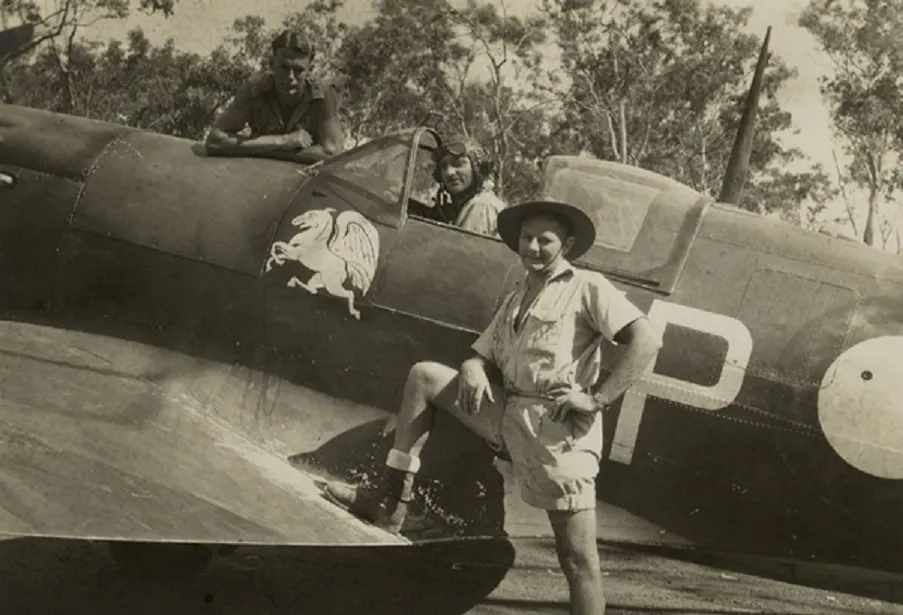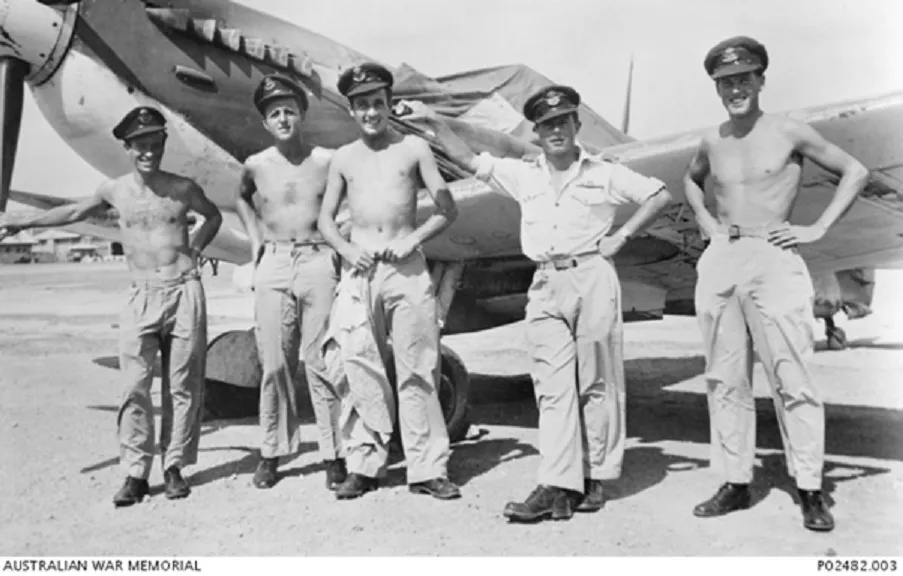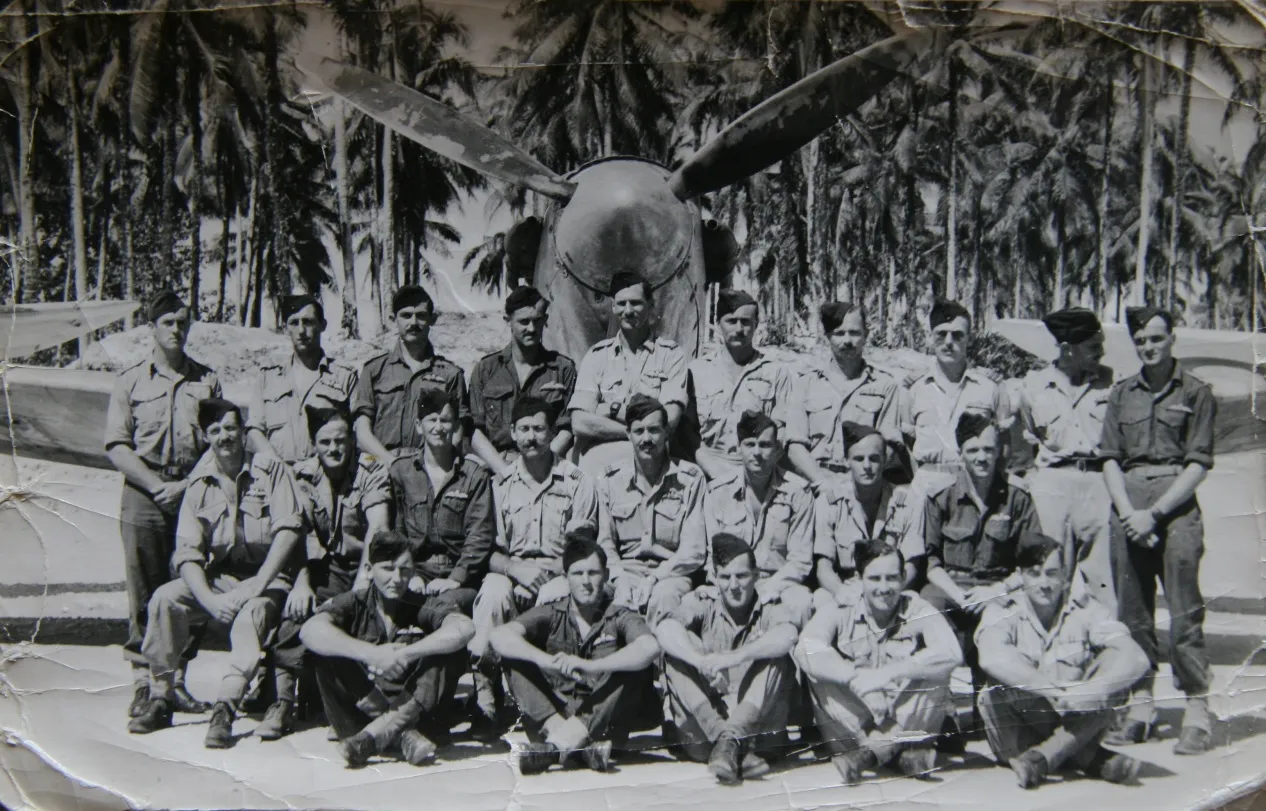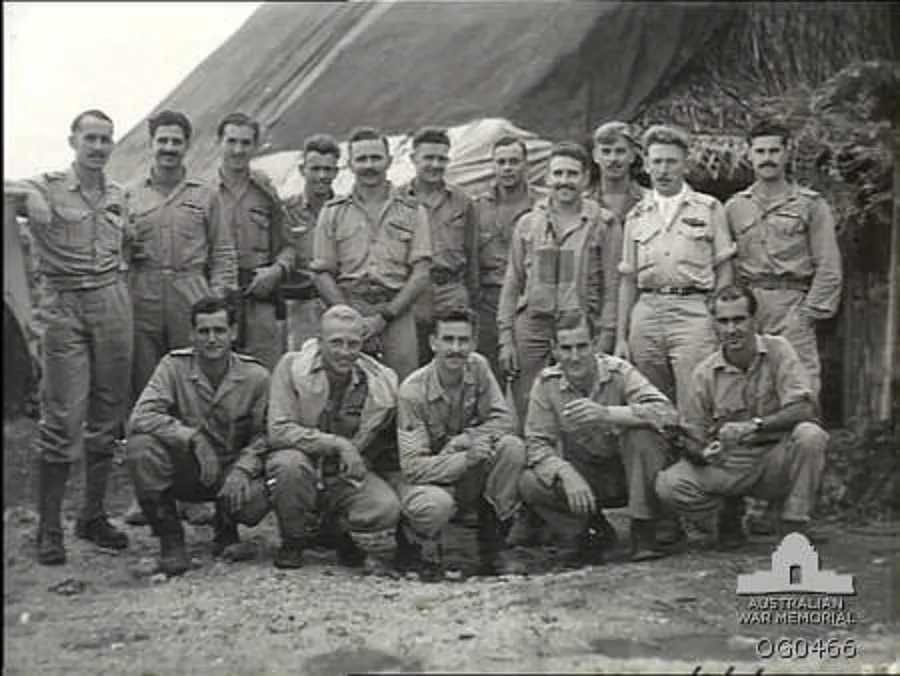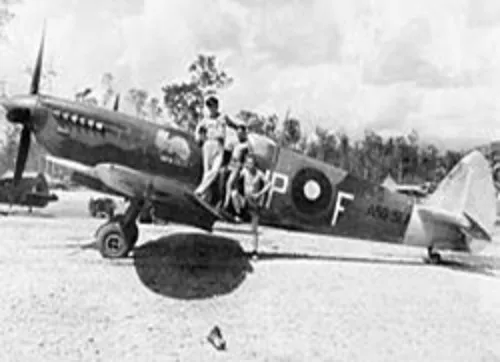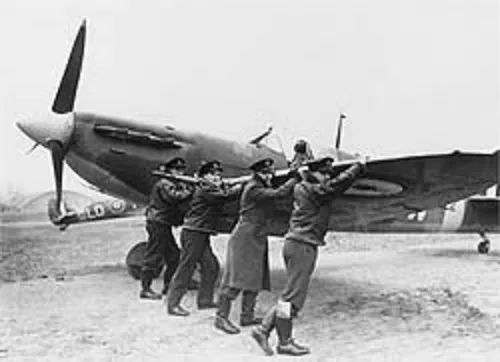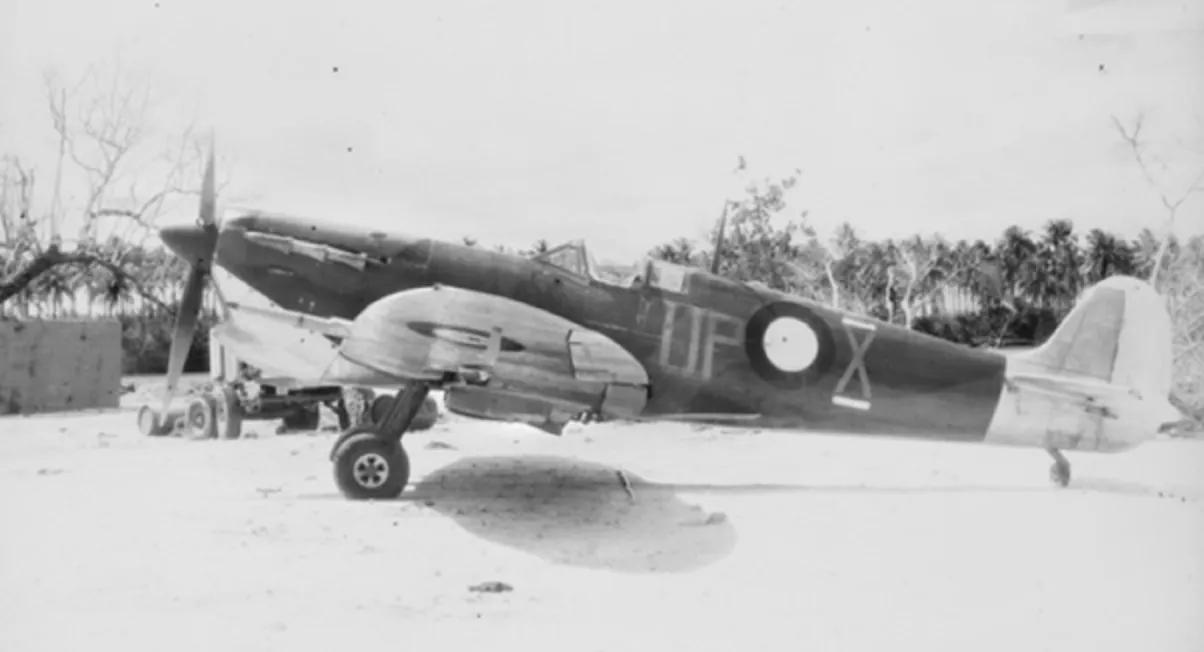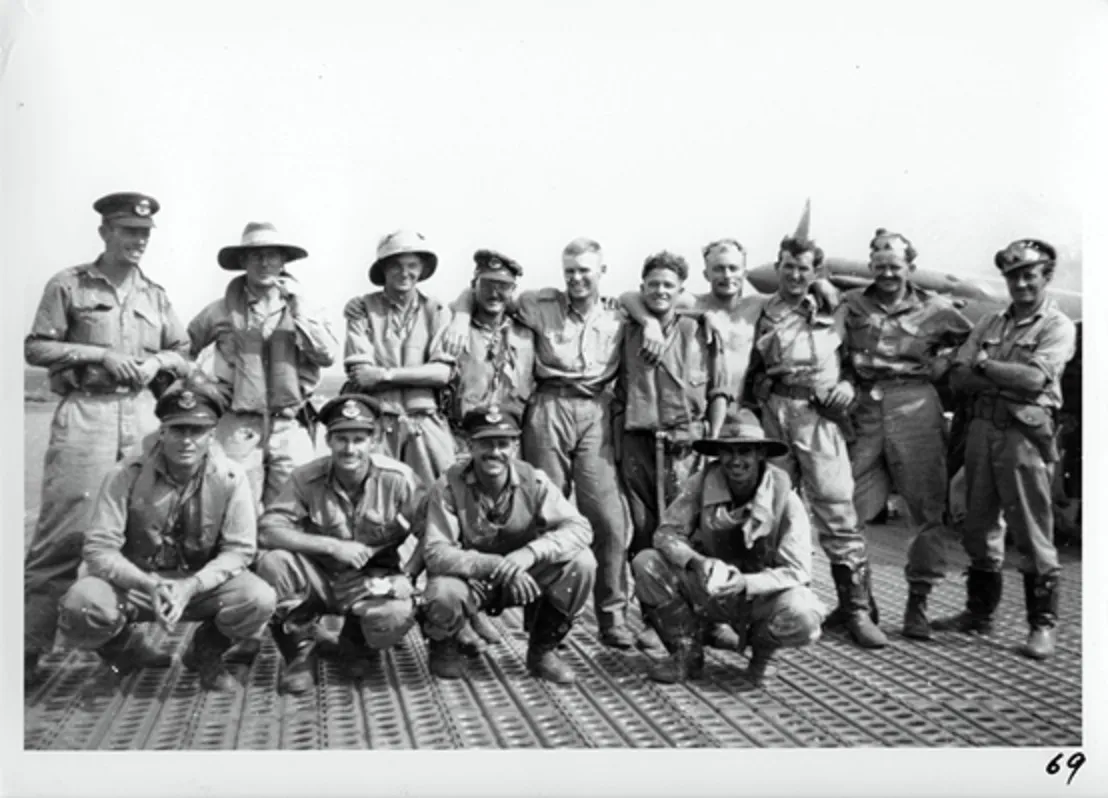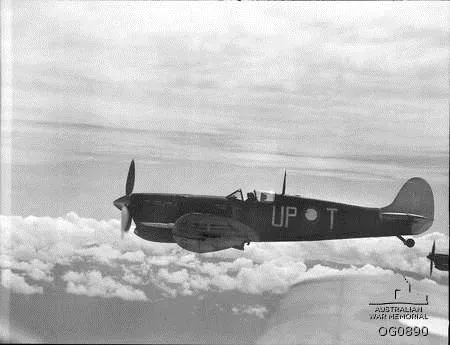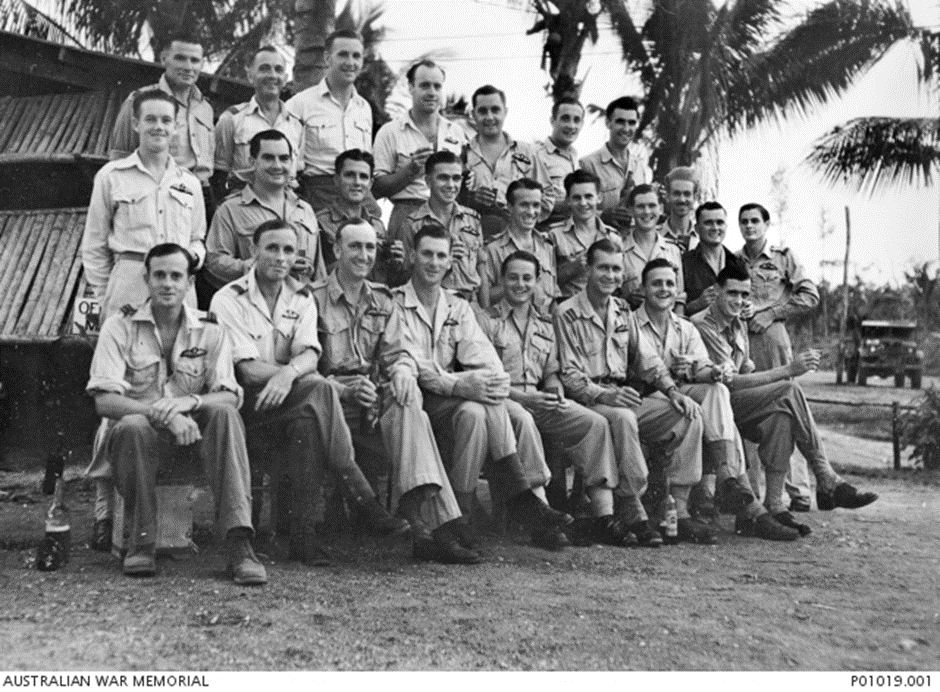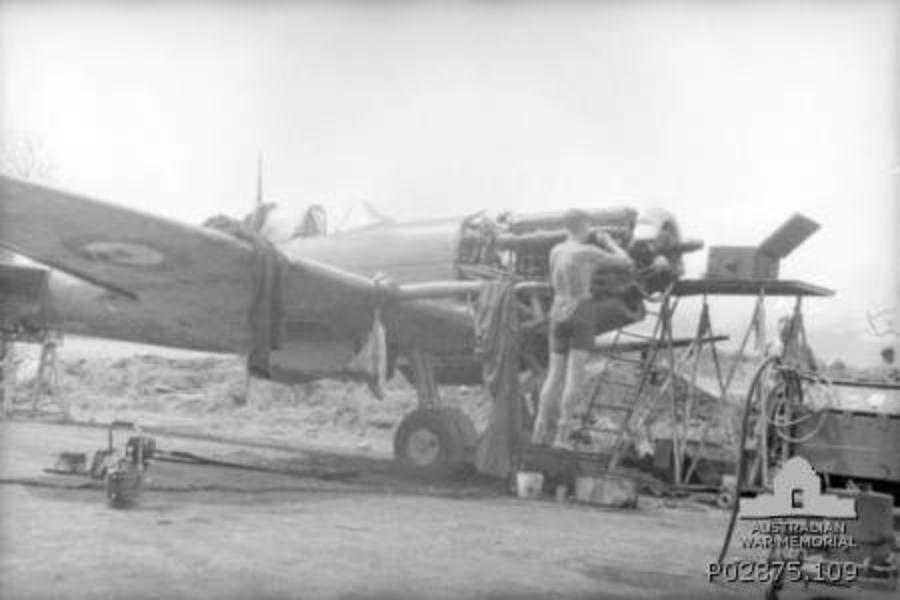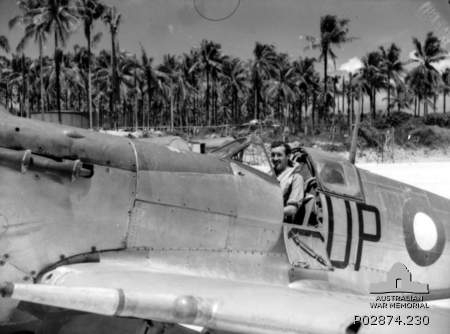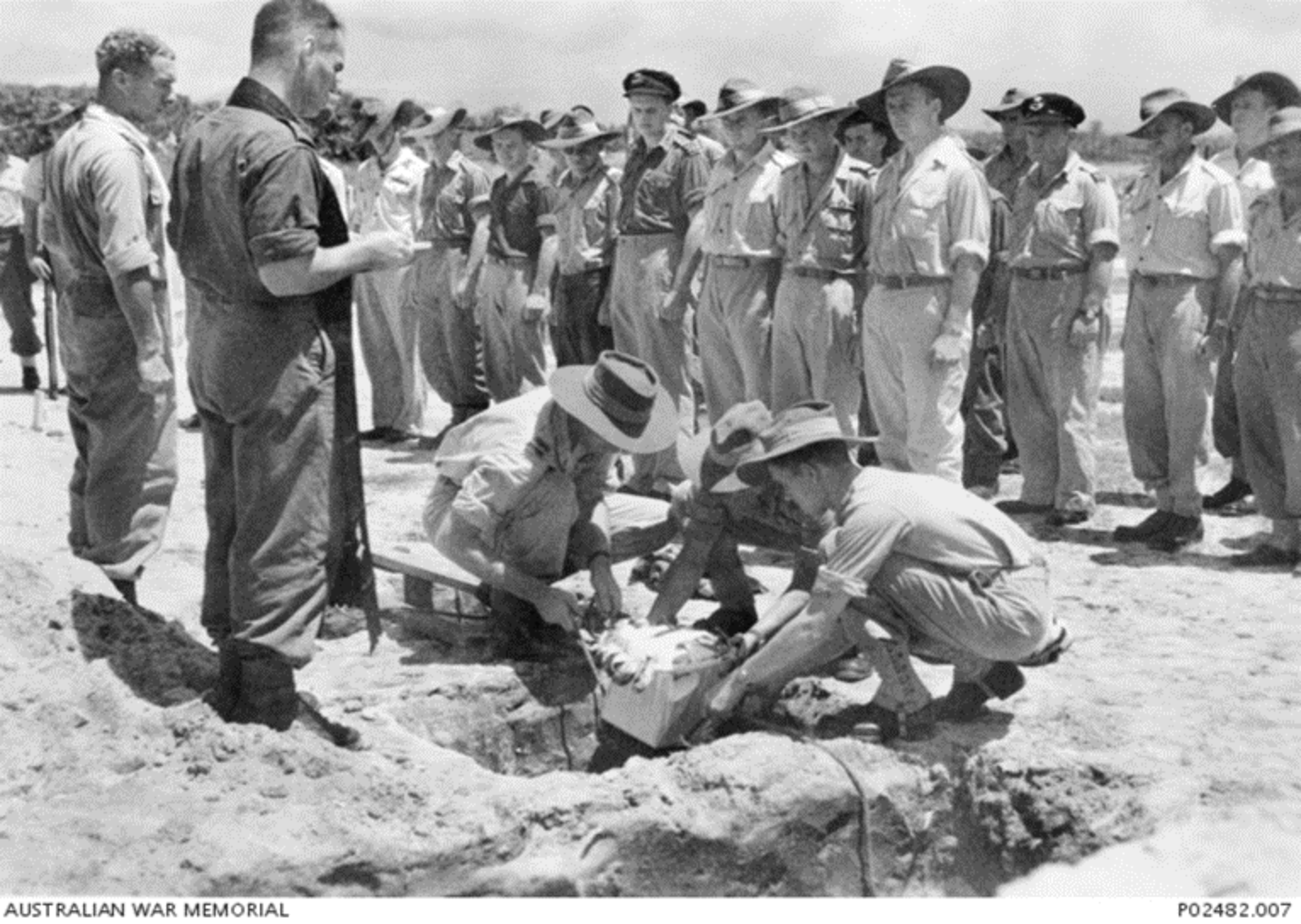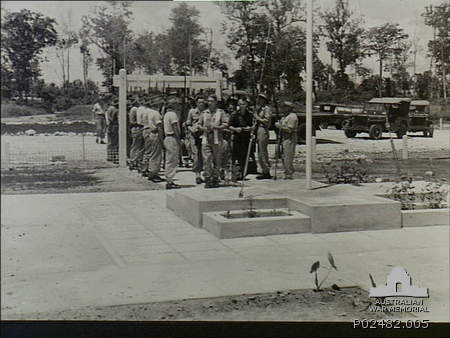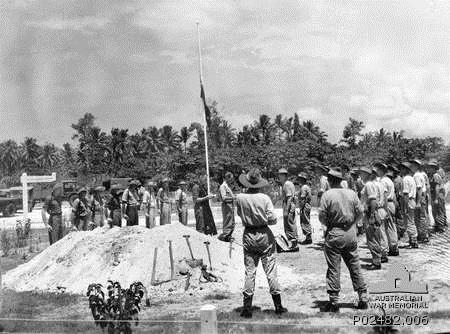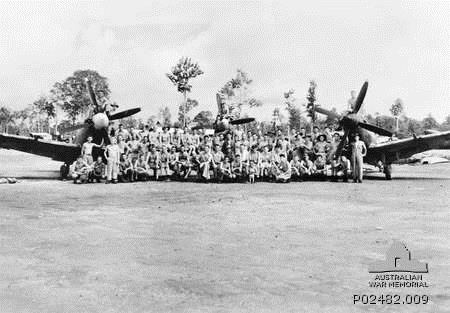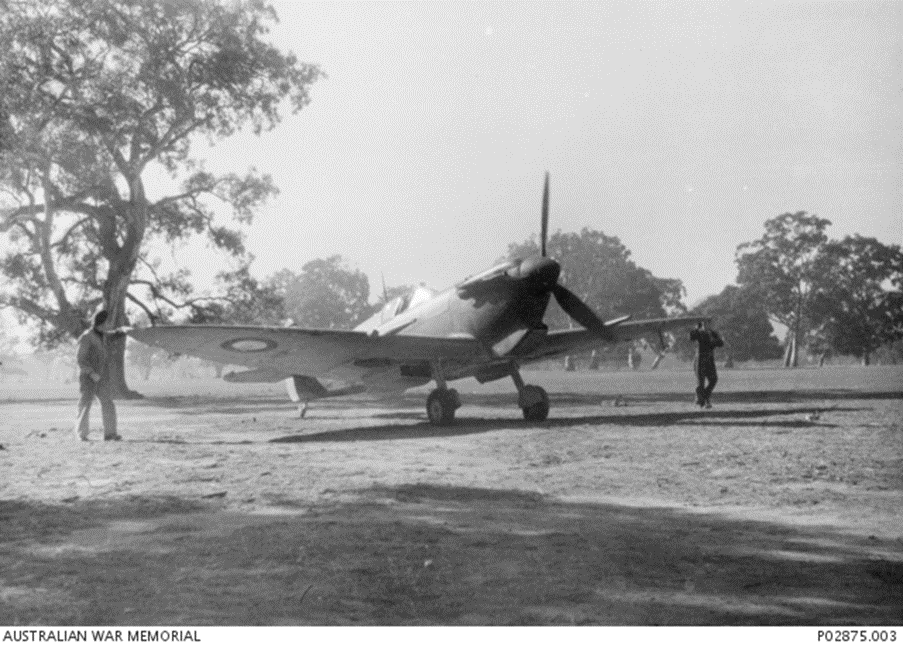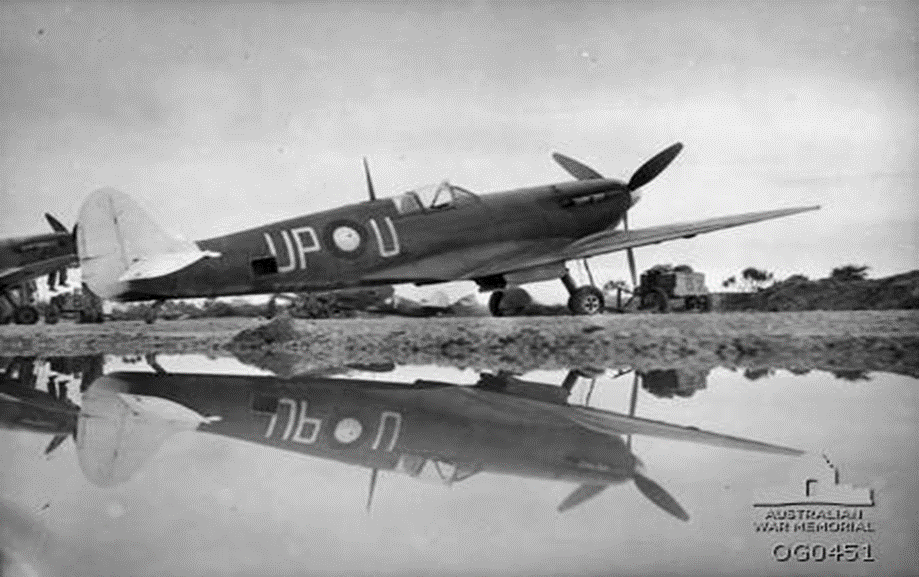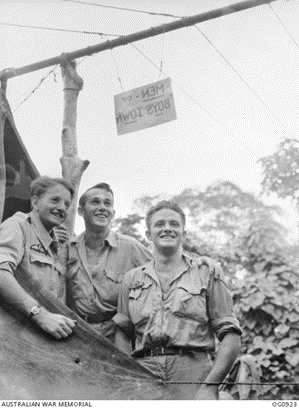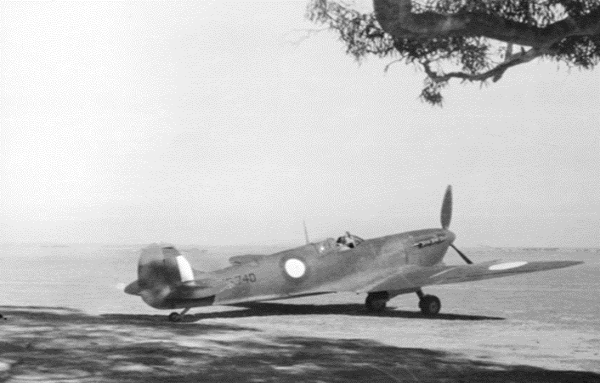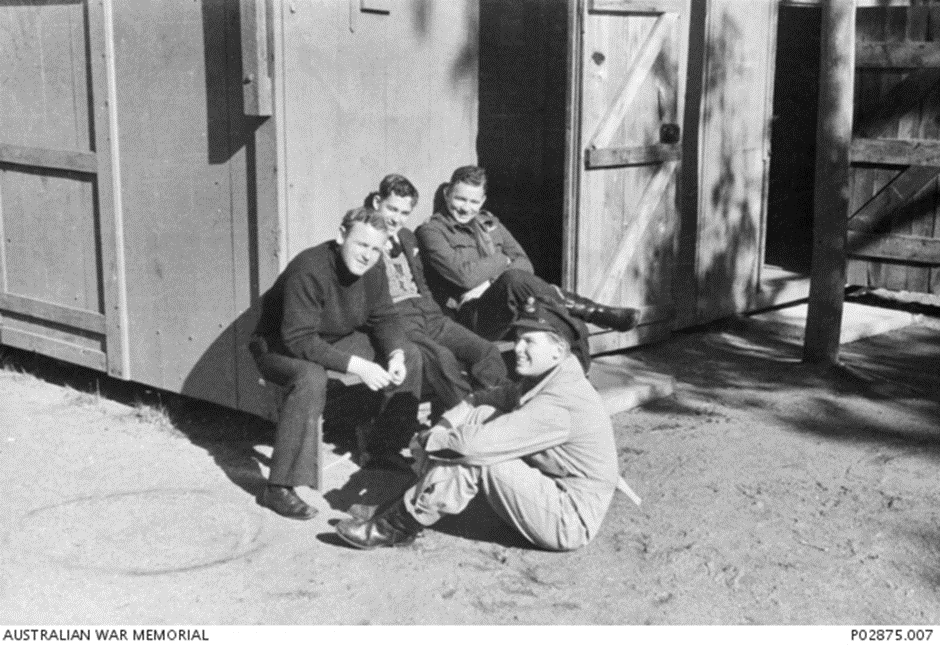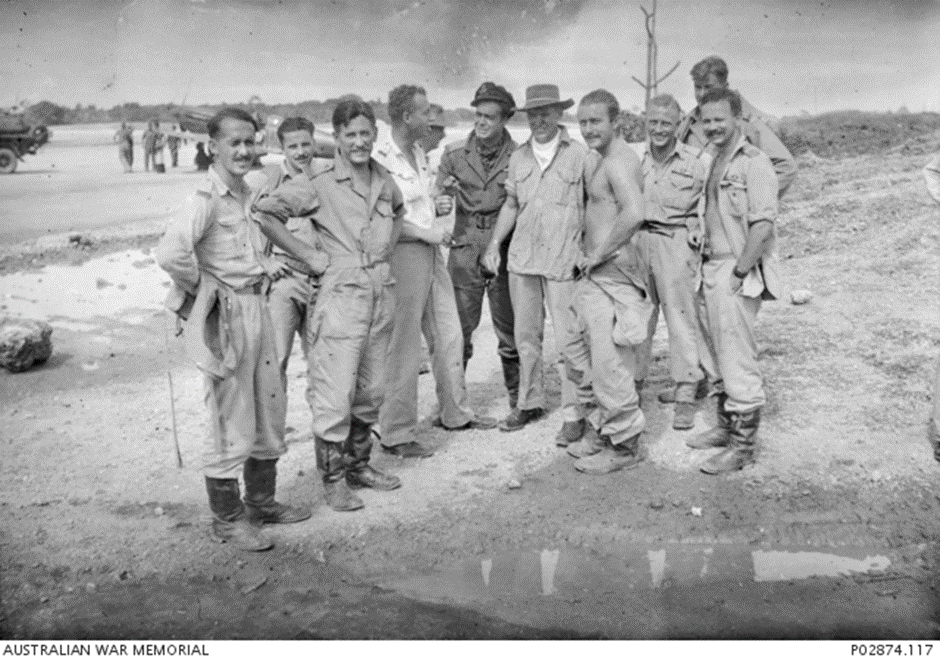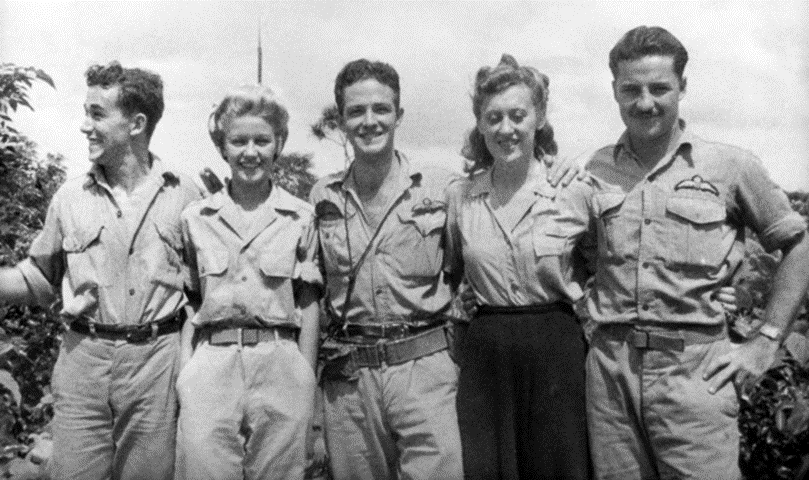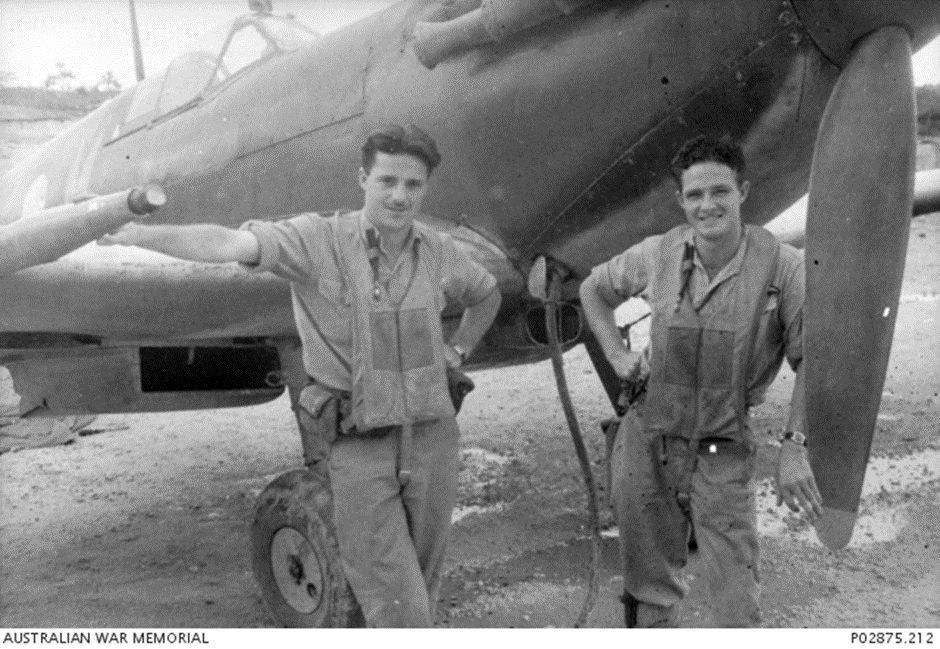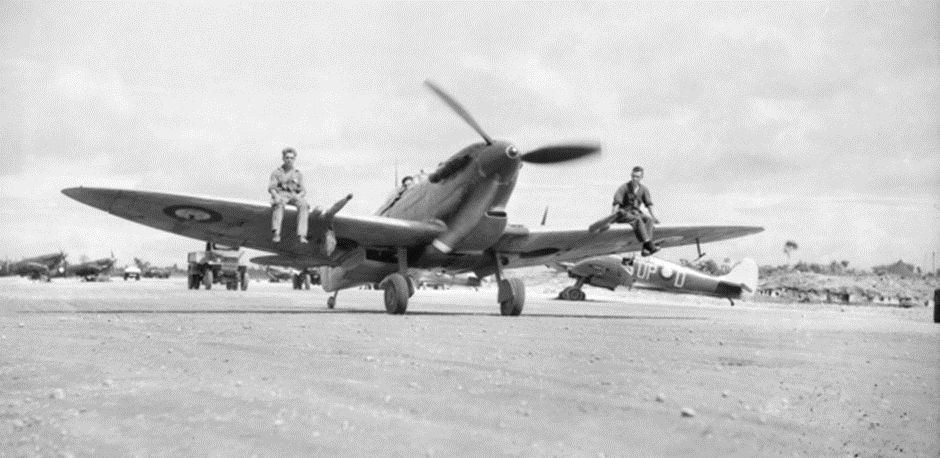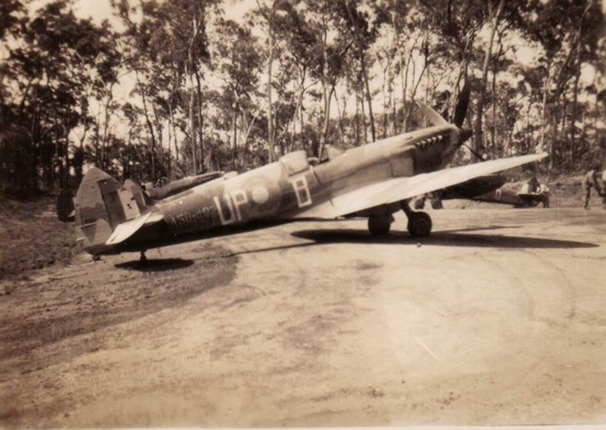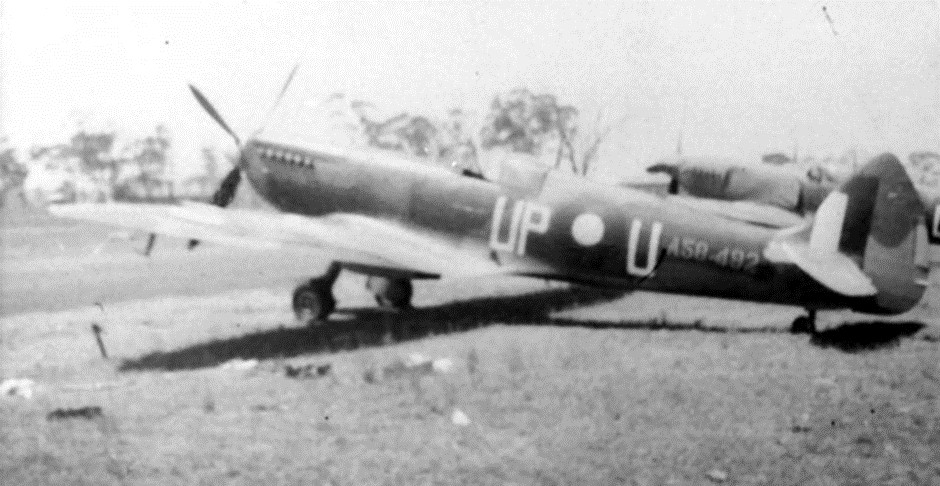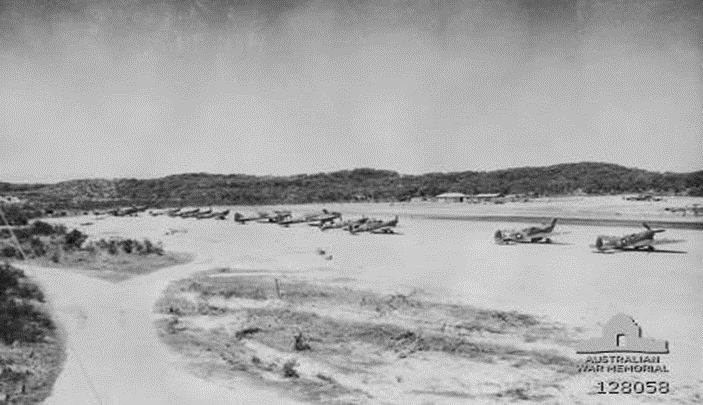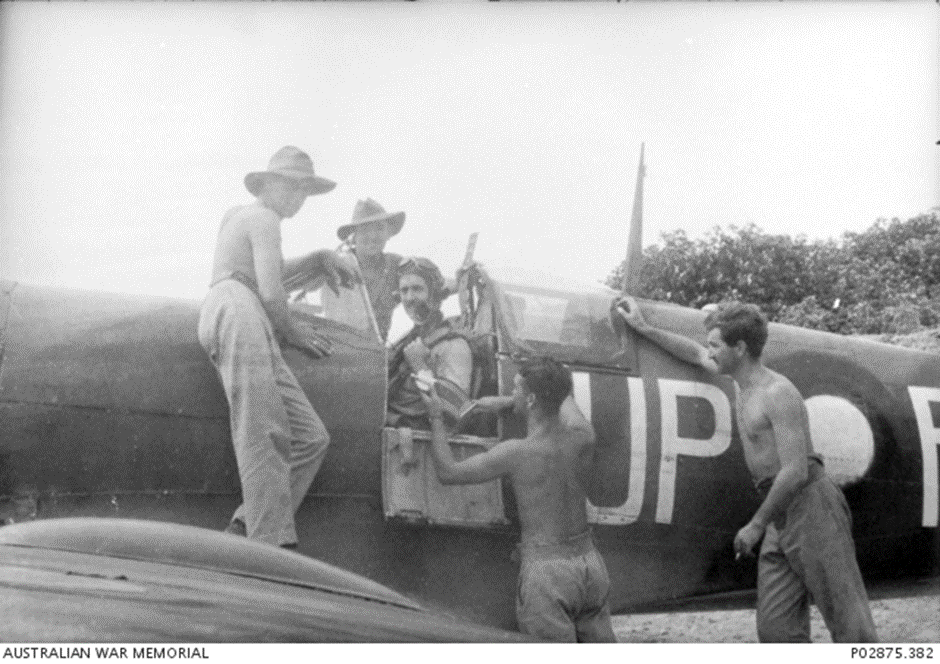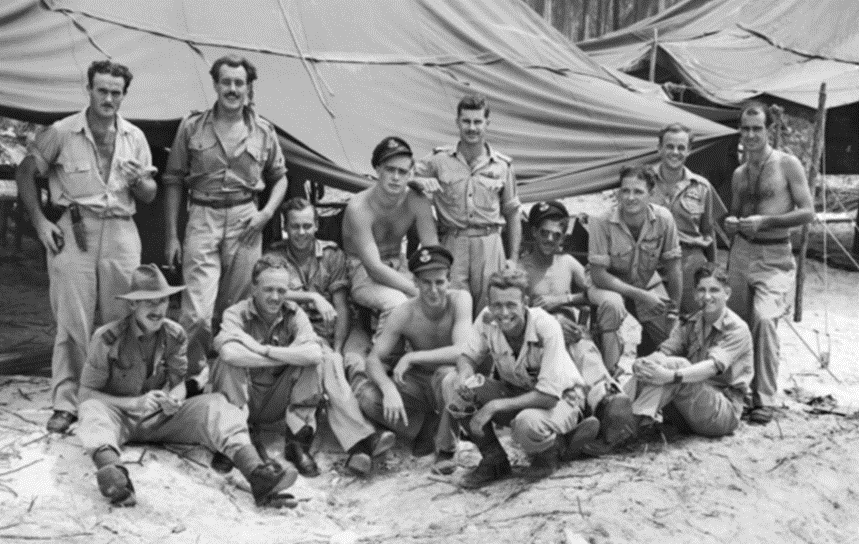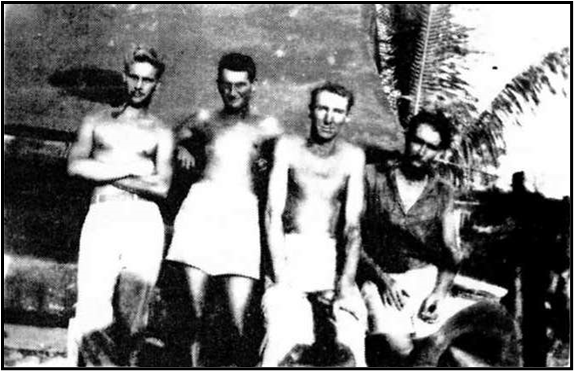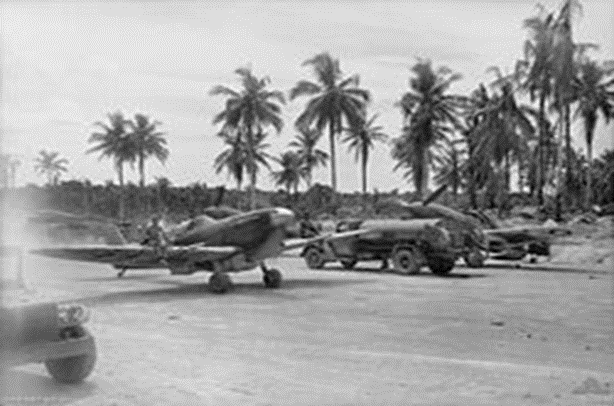No 79 Squadron RAAF
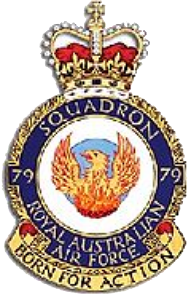


79 Squadron was formed at Laverton, Victoria, on 26 April 1943. The squadron received its first Spitfire VC aircraft a month later, when it was ordered to deploy to Goodenough Island, off New Guinea’s east coast. The advance party from the squadron left Australia in mid-May, while the pilots and aircraft followed in early June. Unfortunately, the squadron soon experienced its first fatality when Flying Officer Virgil Paul Brennan DFC DFM died on 13 June from injuries sustained in an accident at Cairns. Brennan had served at Malta during the height of air fighting over that island.
The squadron was operational by 26 June. The Spitfires redeployed to Kiriwina Island on 18 August and the squadron operated under adverse conditions alongside 76 Squadron from the northern end of the airstrip. 79 Squadron claimed its first victory on 31 October, when Flight Sergeant Neville Faulks and Sergeant Ian Callister sighted an enemy Kawanishi Ki 21 “Tony” which attempted to outrun the Australians. Callister shot the enemy aircraft down in flames but was killed six days later when his Spitfire collided with a Kittyhawk during an early morning take off.
After a period of training and defensive scrambles the squadron flew its first sweep over enemy territory on 27 November 1943, when Squadron Leader Max Bott led eight Spitfires over Gasmata, New Britain. The following day Flying Officer Arthur Moore on a test flight intercepted a “Dinah”, a Japanese reconnaissance aircraft, and shot it down into the sea five miles south of Kitava. On 21 December Flying Officer James Richards and Pilot Officer Barrie intercepted and shot down a “Tony”, while a “Zeke” was strafed on the ground at Gasmata.
In January and February 1944 the squadron flew offensive sweeps over New Britain, strafing enemy installations and escorting bombers. Operations were hampered by heavy rain which played havoc with radio telecommunications.
On 16 March the squadron deployed to Momote, Los Negros. Here it strafed enemy positions on Manus and the adjoining islands, as well as targets on Pityilu Island. It changed to a mainly shipping escort role by the end of April, with the occupation of the Admiralty Islands by American forces. Operations were hampered by a lack of spare parts and only the untiring efforts of ground crews enabled operations to be undertaken. By May the aircraft were becoming difficult to maintain, with only two available for operations, and flying hours were restricted to urgent operational work only. This situation lasted until late November.
On 24 November the squadron was released from operation, pending a move to Darwin which was completed on 12 January 1945. The squadron did not stay long at Sattler, south of Darwin, and an advance party departed for Morotai on 6 February. The squadron was thus operating with difficulty, which did not ease its re-equipment with Mk V111 Spitfires.
By end of March 1944 the squadron was attacking enemy installations, ships, barges, transport, and fuel dumps in the north-west Halmahera Island area. Armed reconnaissance missions were also carried out over Galela, Mita, Kaoe, Oba, Hiri, and Djailolo. Under the command of Squadron Leader Kenneth Elwyn James, 79 Squadron continued to harass the enemy until the end of the war. After the surrender of the Japanese forces in August the squadron dropped surrender leaflets to the scattered and isolated Japanese troops before being formally disbanded on 12 November.
Please note this is not the World War Two crest for 79 SQN. If you can help to identify the correct SQN crest, during the WWII period, please make contact with us.
